
Granada: The Jewel of Andalusia
Discover Granada, Spain: A captivating blend of Moorish heritage, vibrant neighborhoods, and stunning landscapes. Explore the Alhambra, savor local tapas, and enjoy lively flamenco shows.
Granada, nestled at the foot of the Sierra Nevada mountains, is a mesmerizing city that captures the essence of Spain's rich history and vibrant culture. Known for its stunning Moorish architecture, Granada is home to the world-famous Alhambra Palace. This UNESCO World Heritage site is a masterpiece of Islamic art and architecture, offering breathtaking views of the city and the surrounding mountains. Wander through the narrow, winding streets of the Albaicín, the old Moorish quarter of the city. Here, you'll find whitewashed houses, flower-filled balconies, and bustling plazas. Don't miss the chance to visit a traditional tea house, where you can sip on sweet mint tea while soaking in the ambiance. The Albaicín is also the perfect place to enjoy a flamenco show, as the neighborhood is known for its passionate performances. For a taste of modern Granada, explore the vibrant Realejo district. This area is full of trendy bars, restaurants, and shops, making it a great spot to experience the city's contemporary culture. Be sure to try some of the local tapas, as Granada is famous for its generous portions and delicious flavors. When the sun sets, head to the Mirador de San Nicolás for a panoramic view of the Alhambra illuminated against the night sky. This viewpoint is a favorite among both locals and tourists, offering an unforgettable end to your day in Granada.
Local tips in Granada
- Visit the Alhambra early in the morning or late in the afternoon to avoid crowds.
- Wear comfortable shoes as the city's cobblestone streets can be tough on your feet.
- Take advantage of Granada's free tapas culture by ordering a drink at local bars.
- Use the public bus system to reach the Alhambra, especially during peak tourist season.
- Carry a reusable water bottle; Granada has many public fountains with fresh drinking water.
Neighbourhoods in Granada
Granada: The Jewel of Andalusia
Granada, nestled at the foot of the Sierra Nevada mountains, is a mesmerizing city that captures the essence of Spain's rich history and vibrant culture. Known for its stunning Moorish architecture, Granada is home to the world-famous Alhambra Palace. This UNESCO World Heritage site is a masterpiece of Islamic art and architecture, offering breathtaking views of the city and the surrounding mountains. Wander through the narrow, winding streets of the Albaicín, the old Moorish quarter of the city. Here, you'll find whitewashed houses, flower-filled balconies, and bustling plazas. Don't miss the chance to visit a traditional tea house, where you can sip on sweet mint tea while soaking in the ambiance. The Albaicín is also the perfect place to enjoy a flamenco show, as the neighborhood is known for its passionate performances. For a taste of modern Granada, explore the vibrant Realejo district. This area is full of trendy bars, restaurants, and shops, making it a great spot to experience the city's contemporary culture. Be sure to try some of the local tapas, as Granada is famous for its generous portions and delicious flavors. When the sun sets, head to the Mirador de San Nicolás for a panoramic view of the Alhambra illuminated against the night sky. This viewpoint is a favorite among both locals and tourists, offering an unforgettable end to your day in Granada.
When is the best time to go to Granada?
Iconic landmarks you can’t miss
Alhambra
Explore the Alhambra, a stunning UNESCO World Heritage site in Granada, showcasing the beauty of Islamic architecture and rich Moorish history.

Mirador de San Nicolás
Experience breathtaking views of Alhambra and the Sierra Nevada at the iconic Mirador de San Nicolás, a must-visit gem in Granada's Albaicín district.

Catedral de Granada
Experience the historical grandeur of the Catedral de Granada, a stunning example of Renaissance architecture and a symbol of Spain's rich cultural heritage.

Nasrid Palaces
Explore the Nasrid Palaces, a breathtaking historical landmark showcasing the exquisite beauty of Moorish architecture in Granada, Spain.
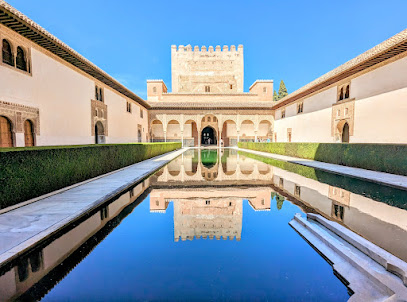
Royal Chapel of Granada
Discover the Royal Chapel of Granada, a Gothic masterpiece and the final resting place of Spain's Catholic Monarchs, steeped in history and artistry.

Fuente de las Batallas
Explore the stunning Fuente de las Batallas in Granada, a captivating fountain surrounded by history and beauty, perfect for every traveler.

Mirador de San Cristóbal
Experience breathtaking views of Granada at the Mirador de San Cristóbal, a must-visit scenic spot in the heart of the Albaicín.

Palace of Charles V
Explore the Palace of Charles V, a stunning Renaissance masterpiece nestled in the Alhambra complex, showcasing the rich history and architecture of Granada.

Jardines del Triunfo
Discover the tranquility of Jardines del Triunfo, a stunning city park in Granada featuring lush gardens and captivating historical monuments.
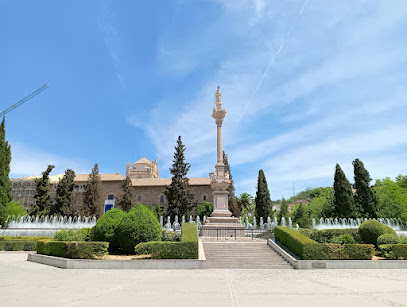
Generalife
Explore the breathtaking Generalife Gardens, a UNESCO World Heritage site, showcasing the beauty of Nasrid architecture and stunning landscapes in Granada.
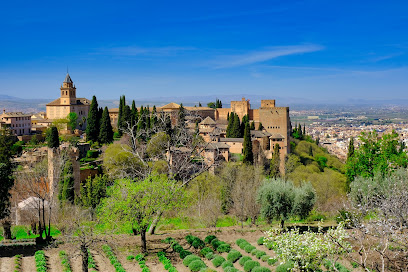
Fuente de las Granadas
Experience the charm of Fuente de las Granadas, a historical landmark and fountain that embodies the essence of Granada's rich cultural heritage.

Puerta de Elvira
Discover the historical charm of Puerta de Elvira, a majestic gateway to Granada's rich Nasrid heritage and stunning vistas.

Carmen de los Mártires
Discover the tranquil beauty of Carmen de los Mártires, a stunning garden oasis in Granada offering breathtaking views and a rich historical ambiance.

Monasterio de San Jerónimo, Granada
Discover the serene beauty and rich history of Monasterio de San Jerónimo, a Renaissance gem in the heart of Granada, Spain.

Basílica de San Juan de Dios
Explore the breathtaking beauty and rich history of the Basílica de San Juan de Dios, a baroque masterpiece in the heart of Granada, Spain.
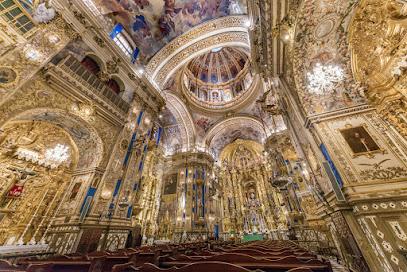
Unmissable attractions to see
Alhambra
Explore the Alhambra, a stunning UNESCO World Heritage Site in Granada, renowned for its breathtaking architecture, lush gardens, and rich Moorish history.

Nasrid Palaces
Discover the exquisite beauty and rich history of the Nasrid Palaces, a must-visit gem in Granada's Alhambra complex.

Mirador de Catarina
Experience breathtaking panoramic views of Lake Cocibolca at Mirador de Catarina, a must-visit destination in Nicaragua for nature lovers.

Palace of Charles V
Discover the Renaissance splendor of the Palace of Charles V, a historical landmark nestled in the breathtaking Alhambra complex in Granada.

Parque Central de Granada
Discover the vibrant atmosphere of Parque Central in Granada, a cultural hub surrounded by colonial architecture, local eateries, and artisan markets.

Generalife
Experience the beauty and tranquility of the Generalife, a historic summer palace with stunning gardens in the heart of Granada.

Monasterio de San Jerónimo, Granada
Explore the stunning Monasterio de San Jerónimo, a historical and architectural jewel in Granada, showcasing exquisite Renaissance artistry and serene gardens.

Cultural Center Old Craft Market
Immerse yourself in Nicaraguan culture at the Cultural Center Old Craft Market in Masaya, where authentic crafts, local flavors, and lively performances await.

Teatro Nacional Rubén Darío
Explore the cultural heart of Managua at Teatro Nacional Rubén Darío, where art, history, and breathtaking performances come together.

El Bañuelo
Explore El Baño del Palacio, a historical landmark in Granada's Albaicín district, showcasing exquisite Moorish architecture and rich cultural heritage.

Reserva Natural Volcán Mombacho
Explore the breathtaking landscapes and rich biodiversity of Reserva Natural Volcán Mombacho, a must-visit nature preserve near Granada, Nicaragua.

Granada Malecon
Discover the beauty of Granada Malecon, a stunning waterfront park perfect for relaxation, culture, and breathtaking views of Lake Nicaragua.

Chocolate Museum of Granada
Explore the fascinating world of chocolate at the Chocolate Museum of Granada, where history, culture, and taste blend perfectly in an unforgettable experience.

Xalteva Park
Experience the vibrant culture and tranquil beauty of Xalteva Park, a must-visit oasis in the heart of Granada, Nicaragua.

Patio de Los Leones
Explore the enchanting Patio de Los Leones, a stunning showcase of Moorish architecture and history in the heart of Alhambra, Granada.

Essential places to dine
Los Manueles Reyes Católicos - Restaurante Granadino
Discover authentic Andalusian flavors at Los Manueles Reyes Católicos - a must-visit Spanish restaurant in the heart of Granada.

La Auténtica Carmela
Experience authentic Spanish flavors at La Auténtica Carmela in Granada – where tradition meets modern Mediterranean cuisine.
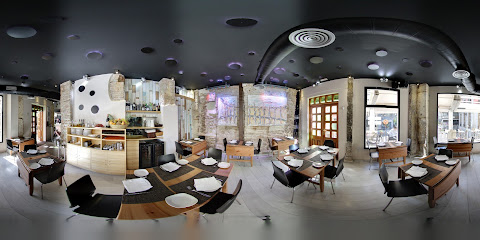
Los Manueles Restaurante Catedral
Experience authentic Andalusian flavors at Los Manueles Restaurante Catedral in Granada's vibrant heart.
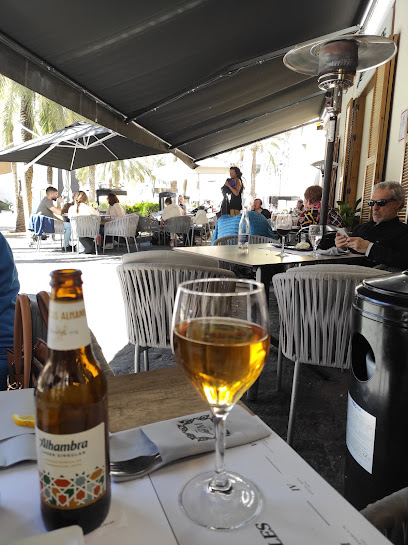
Restaurante Palacio Andaluz Almona
Experience authentic Moroccan cuisine infused with vegan delights at Restaurante Palacio Andaluz Almona in the heart of Granada.

La Cuchara de Carmela
Discover La Cuchara de Carmela in Granada – where authentic Andalusian cuisine meets vibrant Mediterranean flavors in a cozy setting.
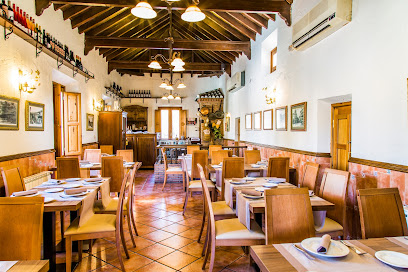
Restaurante Carmen El Agua
Discover authentic Spanish flavors at Restaurante Carmen El Agua in Granada's historic Albaicín district with breathtaking views.

La Vinoteca
Discover the flavors of Andalusia at La Vinoteca – where exquisite tapas meet fine local wines in the heart of Granada.
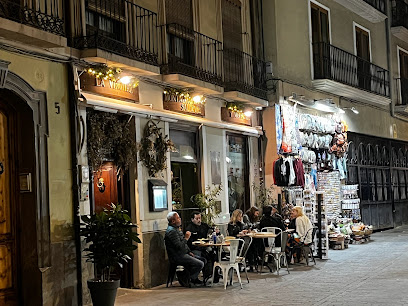
Restaurante La Botillería
Savor the essence of Spain at Restaurante La Botillería - where every dish tells a story.

Papas Elvira
Discover Papas Elvira in Granada: A haven for health-conscious food lovers offering halal and vegetarian delights amidst stunning historical surroundings.

La Piccola Carmela
Experience authentic Italian flavors in the heart of Granada at La Piccola Carmela - where every meal is a celebration.

La Bodega de Antonio
Discover the heart of Spanish cuisine at La Bodega de Antonio – where authentic flavors meet warm hospitality in Granada.
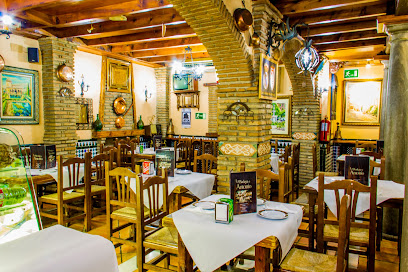
Restaurante Oliver
Experience authentic Mediterranean flavors at Restaurante Oliver in Granada – where tradition meets taste.

El Trillo Restaurante Granada
Discover El Trillo Restaurante in Granada - a Mediterranean culinary experience surrounded by history and breathtaking views.
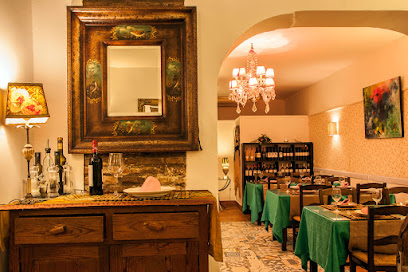
El Fogón de Galicia
Discover authentic Galician cuisine in Granada at El Fogón de Galicia – where tradition meets flavor in every dish.
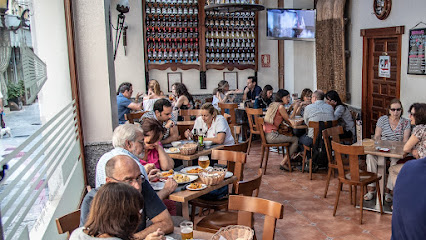
Puerta del Carmen
Discover the vibrant culinary scene at Puerta del Carmen in Granada – where traditional tapas meet innovative cocktails in a lively atmosphere.
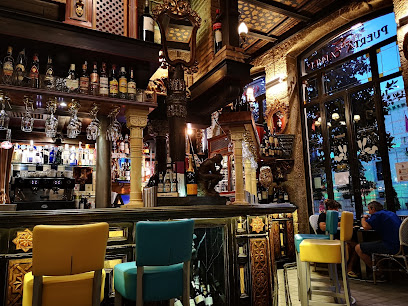
Markets, malls and hidden boutiques
Nevada Shopping
Explore Nevada Shopping in Armilla: a lively shopping experience with diverse stores, delightful dining, and endless entertainment options.

Serrallo Plaza
Experience the vibrant shopping and dining scene at Serrallo Plaza, Granada's premier shopping mall, perfect for families and tourists alike.

Alcaicería
Explore Alcaicería, Granada's vibrant market of unique handicrafts, religious goods, and enchanting miniatures, rich in history and culture.

Patio de los Perfumes
Explore the captivating world of scents at Patio de los Perfumes in Granada, a unique perfume store and aromatherapy museum.
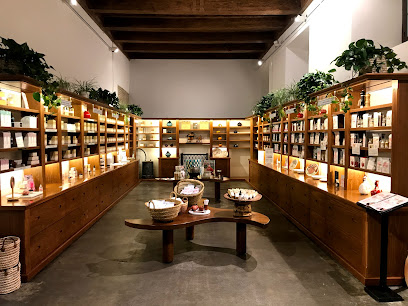
Flying Tiger Copenhagen
Explore Flying Tiger Copenhagen in Granada for a delightful shopping experience filled with unique gifts, home goods, and playful treasures.
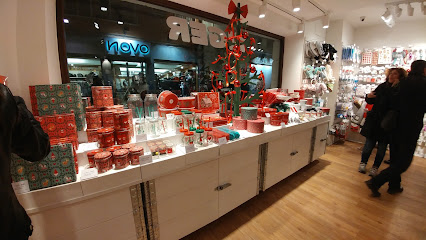
Medievo
Explore the enchanting world of tea at Medievo, a premier tea and spice store in Granada, where flavors and aromas come alive.

Wawel
Explore Wawel in Granada: Discover unique gifts and handcrafted treasures that capture the essence of this enchanting city.
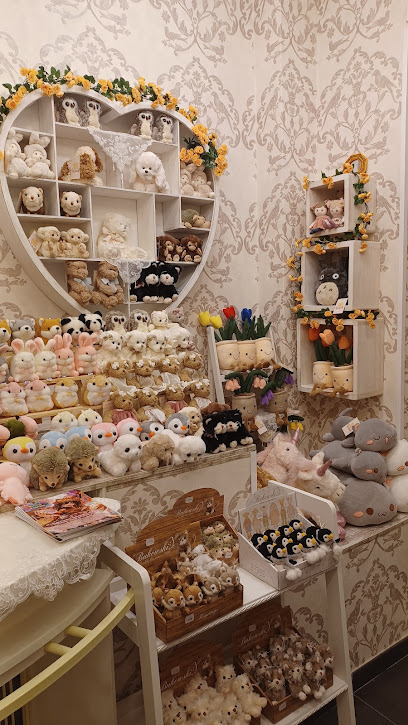
Alhambra Bookstore
Discover Alhambra Bookstore in Granada: a cozy haven for literature lovers, featuring a diverse collection and vibrant cultural events.

ALE-HOP
Explore ALE-HOP in Granada for unique gifts, fashion accessories, and home goods that embody the spirit of local culture and creativity.

La Madriguera Shop
Explore La Madriguera Shop in Granada for unique art supplies and gifts that celebrate creativity and culture in a charming atmosphere.

Artesanías Medina
Explore the vibrant craftsmanship of Granada at Artesanías Medina, your go-to destination for unique handmade souvenirs that reflect local culture.

Lycka
Explore Lycka in Granada for unique gifts, toys, and home goods that embody the city’s charm and creativity.
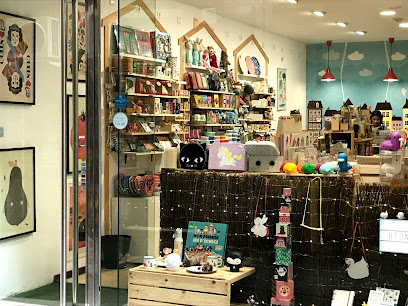
Sabor a España
Discover authentic Spanish flavors at Sabor a España, Granada's premier gourmet grocery store for local delicacies and fine nuts.

Kerala Granada. Tienda de artículos que te conectan con la cultura oriental.
Experience Eastern culture like never before at Kerala Granada, your go-to destination for unique oriental goods and aromatherapy products in Granada.

Chic & Nice Moda - Boutique de ropa Granada
Explore Chic & Nice Moda in Granada for a delightful mix of vintage and contemporary fashion that reflects the city's vibrant spirit.

Essential bars & hidden hideouts
Bar La Riviera
Savor authentic Spanish tapas at Bar La Riviera, a vibrant culinary gem in the heart of Granada, perfect for tourists seeking local flavors.

Bodegas Castañeda
Discover the vibrant flavors of Spain at Bodegas Castañeda, a must-visit tapas bar and winery in the heart of Granada, offering an authentic culinary experience.

Taberna La Tana
Discover the heart of Spanish cuisine with local wines and delightful tapas at Taberna La Tana in Granada.

Amsterdam Café Pub
Discover the lively Amsterdam Café Pub in Ronda, Granada, where great cocktails and a vibrant atmosphere await you.

Hannigan & Sons
Discover the authentic taste of Ireland at Hannigan & Sons, a lively pub in Granada serving delicious food, refreshing drinks, and vibrant entertainment.

Capitán Amargo Craft Beer Bar
Experience the lively ambiance and diverse beverage selection at Capitán Amargo Craft Beer Bar in Granada, a must-visit for beer lovers and social seekers.

Bar Casa Julio
Experience the vibrant flavors of Granada at Bar Casa Julio, where authentic tapas and a lively atmosphere come together for an unforgettable culinary adventure.
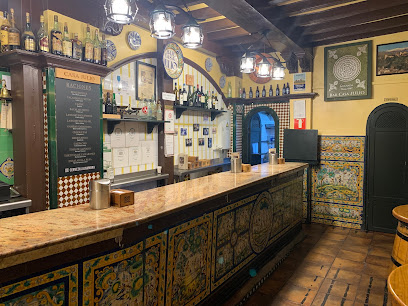
Bar Poë
Discover the vibrant flavors of Granada at Bar Poë, the ultimate tapas bar for an authentic Andalusian experience.

El Bar De Fede
Experience authentic Andalusian cuisine at El Bar De Fede, a vibrant restaurant in the heart of Granada, perfect for every food lover.

Saint Germain
Discover the heart of Granada's nightlife at Saint Germain, where an extensive wine selection and a friendly atmosphere await.

Huerto del Loro
Experience Granada's nightlife at Huerto del Loro - a lively pub and concert hall perfect for cocktails, live music, and unforgettable memories.

Hanalei Cocktail Bar
Discover the lively Hanalei Cocktail Bar in Granada, where expertly crafted cocktails meet a vibrant atmosphere and friendly service.

Bar Candela
Experience the vibrant atmosphere of Bar Candela in Granada, where delicious tapas and refreshing vermouth await in a cozy setting.
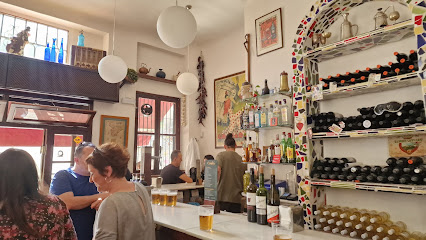
La Taberna de Kafka
Experience the authentic flavors of Andalusia at La Taberna de Kafka, a charming wine bar and bistro in Granada.

Bar Soria
Discover the heart of Granada at Bar Soria, where delightful tapas and local drinks create an unforgettable Andalusian experience.
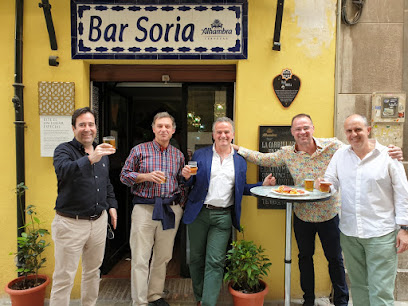
Travel experiences inspired by this city
Explore more travel diariesLocal Phrases
-
- HelloHola
[o-la] - GoodbyeAdiós
[a-di-ós] - YesSí
[sí] - NoNo
[no] - Please/You're welcomePor favor/De nada
[por fa-vor/de na-da] - Thank youGracias
[gra-cias] - Excuse me/SorryPerdón/Lo siento
[per-dón/lo cien-to] - How are you?¿Cómo estás?
[¿có-mo es-tás?] - Fine. And you?Bien. ¿Y tú?
[bien. ¿i tú?] - Do you speak English?¿Hablas inglés?
[¿a-blas in-glés?] - I don't understandNo entiendo
[no en-tien-do]
- HelloHola
-
- I'd like to see the menu, pleaseMe gustaría ver la carta, por favor
[me gus-ta-ría ver la car-ta, por fa-vor] - I don't eat meatNo como carne
[no co-mo car-ne] - Cheers!¡Salud!
[¡sa-lud!] - I would like to pay, pleaseMe gustaría pagar, por favor
[me gus-ta-ría pa-gar, por fa-vor]
- I'd like to see the menu, pleaseMe gustaría ver la carta, por favor
-
- Help!¡Ayuda!
[¡a-yu-da!] - Go away!¡Vete!
[¡ve-te!] - Call the Police!¡Llama a la policía!
[¡ya-ma a la po-li-cía!] - Call a doctor!¡Llama a un médico!
[¡ya-ma a un mé-di-co!] - I'm lostEstoy perdido
[es-toy per-di-do] - I'm illEstoy enfermo
[es-toy en-fer-mo]
- Help!¡Ayuda!
-
- I'd like to buy...Me gustaría comprar...
[me gus-ta-ría com-prar...] - I'm just lookingSolo estoy mirando
[so-lo es-toy mi-ran-do] - How much is it?¿Cuánto cuesta?
[¿cuan-to cues-ta?] - That's too expensiveEsto es demasiado caro
[es-to es de-ma-sia-do ca-ro] - Can you lower the price?¿Puede bajar el precio?
[¿pue-de ba-jar el pre-cio?]
- I'd like to buy...Me gustaría comprar...
-
- What time is it?¿Qué hora es?
[¿qué ho-ra es?] - It's one o'clockEs la una
[es la u-na] - Half past (10)Las diez y media
[las diez i me-dia] - MorningMañana
[ma-ña-na] - AfternoonTarde
[tar-de] - EveningNoche
[no-che] - YesterdayAyer
[a-yer] - TodayHoy
[hoi] - TomorrowMañana
[ma-ña-na] - 1Uno
[u-no] - 2Dos
[dos] - 3Tres
[tres] - 4Cuatro
[cua-tro] - 5Cinco
[cin-co] - 6Seis
[seis] - 7Siete
[sien-te] - 8Ocho
[o-cho] - 9Nueve
[nue-ve] - 10Diez
[diez]
- What time is it?¿Qué hora es?
-
- Where's a/the...?¿Dónde está...?
[¿dón-de es-tá...?] - What's the address?¿Cuál es la dirección?
[¿cual es la di-rec-ción?] - Can you show me (on the map)?¿Puedes mostrarme (en el mapa)?
[¿pue-des mos-trar-me (en el ma-pa)?] - When's the next (bus)?¿Cuándo es el próximo (autobús)?
[¿cuan-do es el pró-xi-mo (au-to-bús)?] - A ticket (to ....)Un billete (a ....)
[un bi-lle-te (a ....)]
- Where's a/the...?¿Dónde está...?
History of Granada
-
Founded in the 13th century, the Nasrid Dynasty ruled the Emirate of Granada, which became the last Muslim stronghold in Spain. The Alhambra, an architectural masterpiece, was constructed during this period. This palace and fortress complex represents the pinnacle of Moorish art in Spain, featuring intricate stucco work, serene courtyards, and stunning tile mosaics.
-
The Reconquista, the Christian campaign to reclaim Iberian territories from Muslim rule, culminated in the fall of Granada in 1492. The Catholic Monarchs, Ferdinand II of Aragon and Isabella I of Castile, accepted the surrender of the last Nasrid ruler, Boabdil. This event marked the end of Muslim rule in Spain and the beginning of a new era under Christian domination.
-
In the year 1492, the same year Granada fell, Christopher Columbus received support from the Catholic Monarchs for his voyage to the New World. The Alhambra played a significant role, as it was in its halls that Columbus negotiated terms for his expedition. This pivotal moment led to the Age of Exploration and Spain's emergence as a global maritime power.
-
In 1492, following the Reconquista, the Catholic Monarchs issued the Alhambra Decree, which ordered the expulsion of Jews from Spain. As a result, many Jewish families were forced to convert to Christianity or leave the country. This decree had a profound impact on the social and cultural fabric of Granada and the broader Spanish realm.
-
In the 16th century, the Moriscos—Muslims who had converted to Christianity—faced increasing persecution and harsh assimilation policies. This led to the Morisco Rebellion of 1568-1571, centered in the Alpujarras region near Granada. The revolt was brutally suppressed, and many Moriscos were subsequently expelled from Spain, further altering the demographic landscape of Granada.
-
During the early 19th century, Granada played a significant role in the Spanish War of Independence against Napoleonic France. The city's strategic location made it a focal point for military campaigns and local resistance efforts. The conflict left lasting scars on Granada's urban landscape, but also instilled a strong sense of national identity and resilience among its inhabitants.
-
In the 19th century, Granada experienced a cultural renaissance driven by Romanticism. European writers, artists, and travelers, enchanted by the city's Moorish legacy, flocked to Granada. Figures like Washington Irving, who wrote 'Tales of the Alhambra,' helped revive international interest in Granada's historical and architectural treasures, cementing its place as a key destination on the cultural map of Europe.
Granada Essentials
-
Granada is accessible via Federico García Lorca Granada-Jaén Airport, which is around 15 kilometers west of the city. The airport receives domestic flights and a few international routes. Alternatively, Málaga-Costa del Sol Airport, approximately 125 kilometers away, offers a broader range of international flights. From Málaga, you can take a direct bus or train to Granada. High-speed AVE trains connect Granada to major cities like Madrid and Barcelona. Buses operated by ALSA also run frequent routes connecting Granada to other parts of Spain.
-
Granada offers various transportation options, including buses, taxis, and rental cars. The local bus network is extensive and covers most areas of the city. Taxis are also readily available and relatively affordable. For shorter distances, walking is a great way to explore the historic city center. If you plan to visit the surrounding areas, renting a car can be convenient. Granada also has a light rail system, the Metro de Granada, which connects various parts of the city and suburbs.
-
The official currency in Spain is the Euro (€). Credit cards are widely accepted in hotels, restaurants, and shops. However, it is advisable to carry some cash for smaller establishments, local markets, and taxis. ATMs are plentiful throughout Granada, and most accept international cards. Be aware of potential foreign transaction fees from your bank when using ATMs or making purchases with your credit card.
-
Granada is generally a safe city for tourists. However, it is advisable to take standard precautions. Avoid poorly lit areas at night and be cautious of pickpockets, especially in crowded places like markets and public transport. The Albaicín and Sacromonte neighborhoods are charming but have narrow, winding streets where it is best to stay vigilant. Always keep your belongings secure and be aware of your surroundings.
-
In case of emergency, dial 112 for immediate assistance. This number connects you to emergency services, including police, fire, and medical services. Granada has several hospitals and medical centers, such as Hospital Universitario Virgen de las Nieves. Pharmacies are plentiful and usually open late. It is recommended to have travel insurance that covers medical emergencies. For minor health issues, pharmacists can provide advice and over-the-counter medications.
-
Fashion: Do dress comfortably, but be respectful when visiting religious sites. Avoid overly revealing clothing. Religion: Do respect local customs, especially in religious areas like the Alhambra and local churches. Public Transport: Do validate your bus ticket upon boarding. Don’t be loud or disruptive on public transportation. Greetings: Do greet people with a 'hola' or 'buenos días' and a handshake. Eating & Drinking: Do try local tapas and accept food offerings graciously. Don’t tip excessively; rounding up the bill or leaving a small amount is sufficient.
-
To experience Granada like a local, visit the Alcaicería market for unique souvenirs and traditional crafts. Enjoy a traditional flamenco show in the Sacromonte caves. Take a stroll down Carrera del Darro for picturesque views of the Alhambra. Don’t miss the local tapas culture—order a drink and receive a free tapa in most bars. For a quieter experience, explore the Generalife gardens early in the morning or late in the afternoon.
Trending Landmark in Granada
-
Alhambra
-
Mirador de San Nicolás
-
Catedral de Granada
-
Nasrid Palaces
-
Royal Chapel of Granada
-
Fuente de las Batallas
-
Mirador de San Cristóbal
-
Palace of Charles V
-
Jardines del Triunfo
-
Generalife
-
Fuente de las Granadas
-
Puerta de Elvira
-
Carmen de los Mártires
-
Monasterio de San Jerónimo, Granada
-
Basílica de San Juan de Dios
Nearby Cities to Granada
-
Things To Do in Masaya
-
Things To Do in Managua
-
Things To Do in Rivas
-
Things To Do in Ometepe
-
Things To Do in San Juan del Sur
-
Things To Do in Jinotega
-
Things To Do in Liberia
-
Things To Do in Playa Flamingo
-
Things To Do in Guanacaste
-
Things To Do in Tamarindo
-
Things To Do in La Fortuna
-
Things To Do in Monteverde
-
Things To Do in Tegucigalpa
-
Things To Do in San Miguel
-
Things To Do in Jaco



















